Themed collection 2017 Sustainable Energy and Fuels HOT Articles

Low-grade waste heat recovery using the reverse magnetocaloric effect
This study demonstrates a novel thermal energy harvesting cycle and provides pathway for low-grade waste heat recovery using magnetocaloric materials.

Sustainable Energy Fuels, 2017,1, 1899-1908
https://doi.org/10.1039/C7SE00182G
Magnetic energy harvesting with magnetoelectrics: an emerging technology for self-powered autonomous systems
Energy harvesting from the weak magnetic fields based on the magneto-mechano-electric (MME) effect is quite promising for powering the low power consumption electronics.
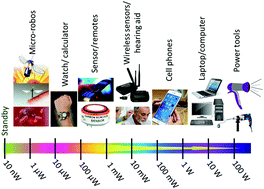
Sustainable Energy Fuels, 2017,1, 2039-2052
https://doi.org/10.1039/C7SE00403F
Multidimensional performance optimization of conducting polymer-based supercapacitor electrodes
We review the most promising design strategies for enhanced conducting polymer-based supercapacitors, summarizing the challenges and recent progress in optimizing each of the most important metrics of supercapacitor performance.
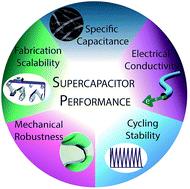
Sustainable Energy Fuels, 2017,1, 1857-1874
https://doi.org/10.1039/C7SE00339K
Visible-light-absorbing semiconductor/molecular catalyst hybrid photoelectrodes for H2 or O2 evolution: recent advances and challenges
Herein, we review the recent advances and challenges in the field of visible-light-absorbing semiconductor/molecular catalyst photoelectrodes for H2 and O2 evolution.
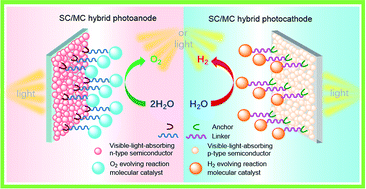
Sustainable Energy Fuels, 2017,1, 1641-1663
https://doi.org/10.1039/C7SE00222J
Insights on pathways for hydrogen generation from ethanol
Hydrogen can be produced from ethanol via reforming, partial oxidation, dehydrogenation, gasification, photocatalysis, and electrocatalysis.
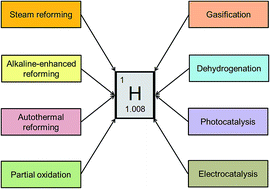
Sustainable Energy Fuels, 2017,1, 1232-1245
https://doi.org/10.1039/C7SE00212B
Current understanding of chemical degradation mechanisms of perfluorosulfonic acid membranes and their mitigation strategies: a review
This article provides a comprehensive perspective of perfluorosulfonic acid fuel cell membrane degradation phenomena, reviews and appraises the effectiveness of key concepts for the mitigation strategies and identifies future research priorities.
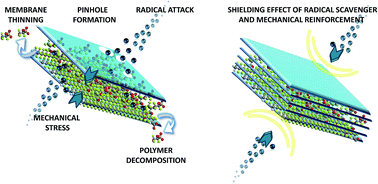
Sustainable Energy Fuels, 2017,1, 409-438
https://doi.org/10.1039/C7SE00038C
The rise of lithium–selenium batteries
The lithium–selenium (Li–Se) battery is an alternative to its sulfur counterpart with some noticeable advantages, such as the significantly higher electrical conductivity of Se and better electrochemical performance.
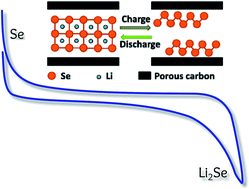
Sustainable Energy Fuels, 2017,1, 14-29
https://doi.org/10.1039/C6SE00094K
Revealing how molten salts promote CO2 capture on CaO via an impedance study and sorption kinetics simulation
Electrochemical impedance spectroscopy analyses were utilised to explore the oxygen ion conductivity of alkali metal salts promoted CaO.
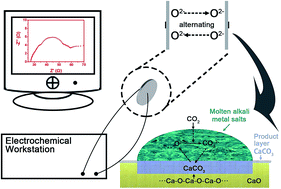
Sustainable Energy Fuels, 2018,2, 68-72
https://doi.org/10.1039/C7SE00502D
Stabilizing organic photocathodes by low-temperature atomic layer deposition of TiO2
Low-temperature atomic layer deposition forms a compact TiO2 film atop a polymer light absorber for stable and efficient organic–inorganic photo-driven H2 evolution.
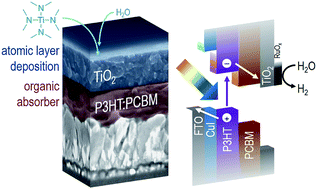
Sustainable Energy Fuels, 2017,1, 1915-1920
https://doi.org/10.1039/C7SE00421D
Carbon-based materials as heterogeneous antioxidants for biodiesel: efficiency and synergy with soluble antioxidants
The interaction of biochar and aromatic amines showed an unexpected, but excellent synergy improving the oxidation stability of biodiesel.
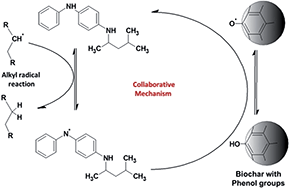
Sustainable Energy Fuels, 2017,1, 56-61
https://doi.org/10.1039/C6SE00017G
Carbon onion/sulfur hybrid cathodes via inverse vulcanization for lithium–sulfur batteries
Inverse vulcanization was used to create carbon onion/sulfur hybrid cathodes for lithium–sulfur battery applications.
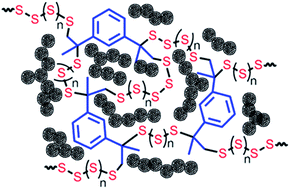
Sustainable Energy Fuels, 2018,2, 133-146
https://doi.org/10.1039/C7SE00452D
Efficient hypochlorous acid (HClO) production via photoelectrochemical solar energy conversion using a BiVO4-based photoanode
BiVO4/WO3/FTO multilayer photoelectrode was found to be suitable for the photoelectrochemical Cl− oxidation into HClO with high current efficiency and low external bias.
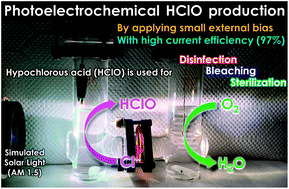
Sustainable Energy Fuels, 2018,2, 155-162
https://doi.org/10.1039/C7SE00453B
Laboratory filter paper as a substrate material for flexible supercapacitors
A lightweight flexible asymmetrical all solid-state supercapacitor based on common laboratory filter paper has been built and exhibits excellent electrochemical and mechanical flexibility performance.
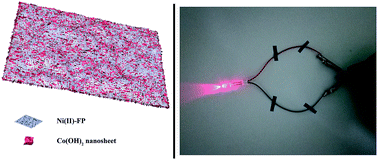
Sustainable Energy Fuels, 2018,2, 147-154
https://doi.org/10.1039/C7SE00411G
Solvent selection and design for CO2 capture – how we might have been missing the point
Efforts to reduce the cost of CO2 capture via the development of new sorbents have primarily focused on increasing CO2 working capacity. Here we show that improved transport properties should be the primary focus.
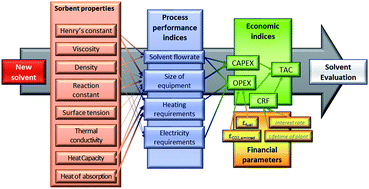
Sustainable Energy Fuels, 2017,1, 2078-2090
https://doi.org/10.1039/C7SE00404D
Multi-shell tin phosphide nanospheres as high performance anode material for a sodium ion battery
The multi-shell Sn4P3 nanospheres with larger specific surface area and interlayer space improve the cycling performance of a sodium ion battery.
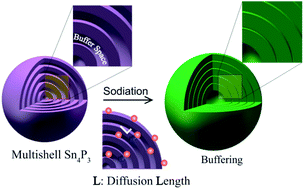
Sustainable Energy Fuels, 2017,1, 1944-1949
https://doi.org/10.1039/C7SE00355B
Small-scale demonstration of the conversion of renewable energy to synthetic hydrocarbons
This paper presents an installation with an average power of 2 kW converting solar energy into synthetic hydrocarbons.
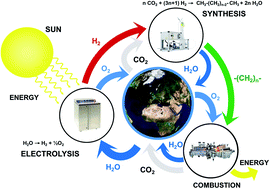
Sustainable Energy Fuels, 2017,1, 1748-1758
https://doi.org/10.1039/C7SE00275K
Process exploration and assessment for the production of methanol and dimethyl ether from carbon dioxide and water
Direct utilisation of CO2 is shown to be no less thermodynamically favourable than CO in the production of dimethyl ether.
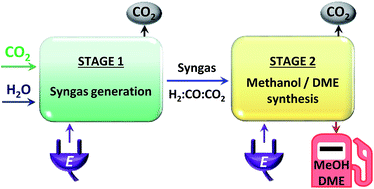
Sustainable Energy Fuels, 2017,1, 1541-1556
https://doi.org/10.1039/C7SE00206H
Direct synthesis of a carbon nanotube interpenetrated doped porous carbon alloy as a durable Pt-free electrocatalyst for the oxygen reduction reaction in an alkaline medium
The carbon nanotube interpenetrated porous doped carbon alloy derived from trimetallic ZIF displays excellent oxygen reduction activity in alkaline media.
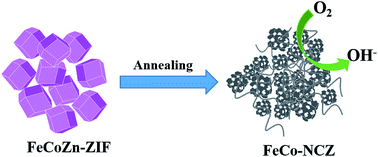
Sustainable Energy Fuels, 2017,1, 1524-1532
https://doi.org/10.1039/C7SE00249A
Candidate photoferroic absorber materials for thin-film solar cells from naturally occurring minerals: enargite, stephanite, and bournonite
A search for photoactive ferroelectric minerals reveals three candidates, which are investigated using first-principles materials modelling.
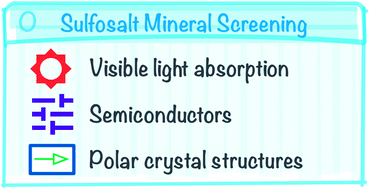
Sustainable Energy Fuels, 2017,1, 1339-1350
https://doi.org/10.1039/C7SE00277G
In situ grown nickel nanoparticles in a calixarene nanoreactor on a graphene–MoS2 support for efficient water electrolysis
The calixarene laden Gr–MoS2 sheets make SC8 as an ideal nanoreactor for the uniform growth of nanometer sized Ni NPs without using any surfactant. The coalescing of the SC8 will form an interconnected network, facilitate rapid electronic transport in electrode reactions and enhances the stability of the GrMoS2SC8Ni nano composite for OER reaction.
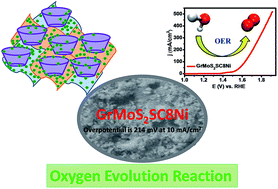
Sustainable Energy Fuels, 2017,1, 1329-1338
https://doi.org/10.1039/C7SE00190H
Destabilisation of Ca(BH4)2 and Mg(BH4)2via confinement in nanoporous Cu2S hollow spheres
Complex borohydrides of calcium (Ca(BH4)2) and magnesium (Mg(BH4)2) have the potential to store significant amounts of hydrogen. However, the temperature for hydrogen release is high >300 °C and reversibility difficult to achieve. Nanoconfinement of these hydrides in Cu2S hollow spheres provides an effective approach to achieve a low temperature for hydrogen release with some partial reversibility.
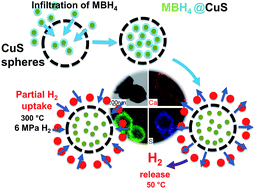
Sustainable Energy Fuels, 2017,1, 1308-1319
https://doi.org/10.1039/C7SE00121E
Chlorine-induced degradation in SOFCs operating with biogas
Experiments described in this work examine degradation mechanisms of nickel-based anodes in solid oxide fuel cells (SOFCs) operating with a biogas surrogate and exposed to 110 ppm Cl (delivered either as CH3Cl or HCl).
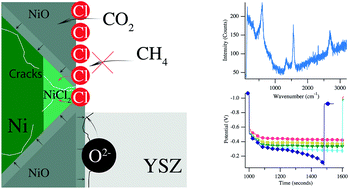
Sustainable Energy Fuels, 2017,1, 1320-1328
https://doi.org/10.1039/C7SE00156H
Suppression of byproduct accumulation in rechargeable aluminum–air batteries using non-oxide ceramic materials as air cathode materials
To develop a high-capacity rechargeable aluminum–air battery with resistance toward the degradation induced by long-term charge–discharge electrochemical reactions, non-oxide ceramic materials, e.g., TiN, TiC, and TiB2, were used as air cathode materials with the ionic liquid 1-ethyl-3-methylimidazolium chloride as the electrolyte.
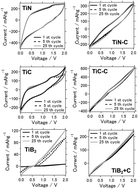
Sustainable Energy Fuels, 2017,1, 1082-1089
https://doi.org/10.1039/C7SE00087A
Surface-modified metal sulfides as stable H2-evolving photocatalysts in Z-scheme water splitting with a [Fe(CN)6]3−/4− redox mediator under visible-light irradiation
Z-scheme water splitting was achieved using K2[CdFe(CN)6]-modified metal sulfides as H2-evolving photocatalysts combined with CoOx-loaded TaON photoanode in the presence of [Fe(CN)6]3−/4− as an electron mediator.
![Graphical abstract: Surface-modified metal sulfides as stable H2-evolving photocatalysts in Z-scheme water splitting with a [Fe(CN)6]3−/4− redox mediator under visible-light irradiation](/en/Image/Get?imageInfo.ImageType=GA&imageInfo.ImageIdentifier.ManuscriptID=C7SE00151G&imageInfo.ImageIdentifier.Year=2017)
Sustainable Energy Fuels, 2017,1, 1065-1073
https://doi.org/10.1039/C7SE00151G
Spinifex nanocellulose derived hard carbon anodes for high-performance sodium-ion batteries
Spinifex grass derived hard carbon is used as anodes for sodium-ion batteries. Extraordinary stability and capacity retention of ∼300 mA h g−1 on prolonged cycling against sodium was observed. The eco-friendly and low-cost synthesis procedure make the biomass derived carbon material promising for energy storage applications.
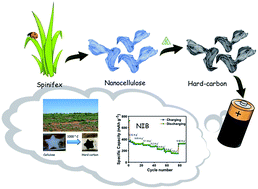
Sustainable Energy Fuels, 2017,1, 1090-1097
https://doi.org/10.1039/C7SE00169J
A polymer-supported electrolyte-affinity hybrid membrane and modification of the amphiphilic block copolymer for use as a super-high flexible and high-performance supercapacitor
In this study, a super-high flexible membrane electrode (FME) was developed via a facile method based on liquid–liquid phase separation involving the migration and self-assembly of the components.
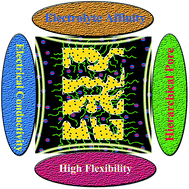
Sustainable Energy Fuels, 2017,1, 1074-1081
https://doi.org/10.1039/C7SE00076F
Hydrothermal co-liquefaction of biomasses – quantitative analysis of bio-crude and aqueous phase composition
Hydrothermal liquefaction of 11 biomasses and their co-liquefaction mixtures show how product composition depends on feedstock biochemical components, while nitrogen and oxygen distribution is controlled by carbohydrate and protein interactions.
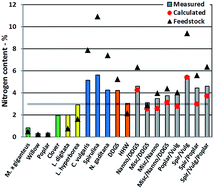
Sustainable Energy Fuels, 2017,1, 789-805
https://doi.org/10.1039/C7SE00104E
Template-free synthesis of mesoporous manganese oxides with catalytic activity in the oxygen evolution reaction
Solvothermally synthesised MnCO3 leads to template-free formation of highly porous, defect-rich MnO2 with high activity in water oxidation.
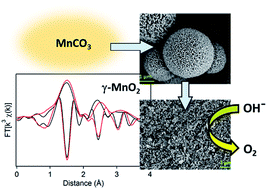
Sustainable Energy Fuels, 2017,1, 780-788
https://doi.org/10.1039/C7SE00086C
Facile hydrothermal fabrication of ZnO–graphene hybrid anode materials with excellent lithium storage properties
ZnO–graphene hybrid materials were synthesized via a hydrothermal fabrication method. As cathodes for Li-ion batteries, their electrochemical performances are investigated.
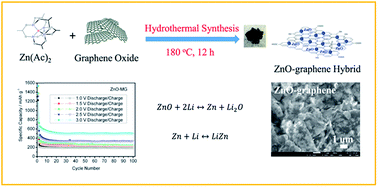
Sustainable Energy Fuels, 2017,1, 767-779
https://doi.org/10.1039/C7SE00102A
Enhanced oxygen evolution on visible light responsive TaON photocatalysts co-loaded with highly active Ru species for IO3− reduction and Co species for water oxidation
Loading an appropriate cocatalyst significantly enhances the activity of semiconductor photocatalysts in both conventional one-step water splitting and Z-scheme-type water splitting with a redox couple.
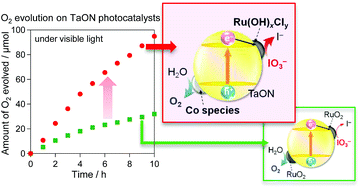
Sustainable Energy Fuels, 2017,1, 748-754
https://doi.org/10.1039/C7SE00110J
Fabrication of CuInS2 photocathodes on carbon microfiber felt by arc plasma deposition for efficient water splitting under visible light
An efficient CuInS2 photocathode was fabricated on conductive carbon microfiber felt (CMF), which comprises a three-dimensional (3D) network of carbon fibers (CFs), by the sequential deposition of metal precursors (Cu and In) and subsequent annealing under a stream of diluted H2S.
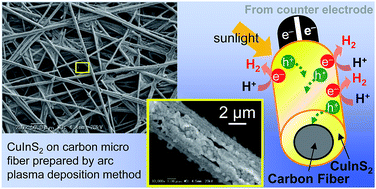
Sustainable Energy Fuels, 2017,1, 699-709
https://doi.org/10.1039/C7SE00008A
Enhancement in efficiency and optoelectronic quality of perovskite thin films annealed in MACl vapor
We analyzed and compared quantitatively the optoelectronic characteristics of perovskite PV devices with and without annealing the perovskite layer in a methyl ammonium chloride vapor atmosphere (MACl treatment).
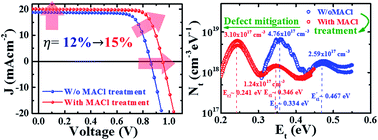
Sustainable Energy Fuels, 2017,1, 755-766
https://doi.org/10.1039/C7SE00033B
Evaluation of flow schemes for near-neutral pH electrolytes in solar-fuel generators
Operating conditions and design principles for the efficient operation of solar-fuel generators with active flow of near-neutral pH electrolytes.
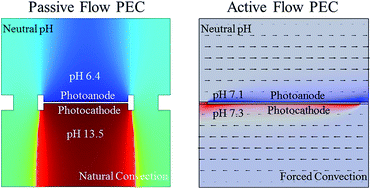
Sustainable Energy Fuels, 2017,1, 458-466
https://doi.org/10.1039/C7SE00062F
Hydrothermal liquefaction of blackcurrant pomace and model molecules: understanding of reaction mechanisms
Hydrothermal liquefaction (HTL) refers to the conversion of carbonaceous resources into oily substances in hot pressurized liquid water.
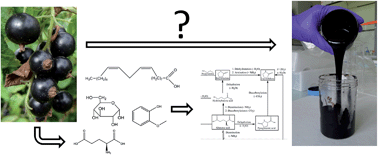
Sustainable Energy Fuels, 2017,1, 555-582
https://doi.org/10.1039/C6SE00065G
Towards sustainable hydrocarbon fuels with biomass fast pyrolysis oil and electrocatalytic upgrading
Electrocatalytic hydrogenation offers a carbon and energy efficient strategy for upgrading pyrolytic bio-oil with renewable electricity in biomass processing depots.
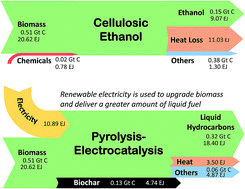
Sustainable Energy Fuels, 2017,1, 258-266
https://doi.org/10.1039/C6SE00080K
CeO2@C derived from benzene carboxylate bridged metal–organic frameworks: ligand induced morphology evolution and influence on the electrochemical properties as a lithium-ion battery anode
Spherically shaped MOF-derived CeO2@C shows a superior performance as a lithium-ion battery anode with high specific capacity, rate performance and cycling stability.
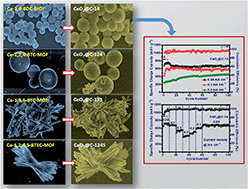
Sustainable Energy Fuels, 2017,1, 288-298
https://doi.org/10.1039/C6SE00026F
Carbon onion–sulfur hybrid cathodes for lithium–sulfur batteries
Hybrids of carbon onions and sulfur can be used as efficient lithium sulfur battery cathodes with promising performance stability.
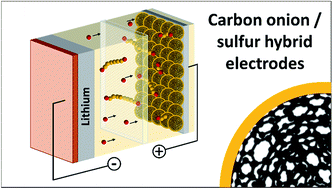
Sustainable Energy Fuels, 2017,1, 84-94
https://doi.org/10.1039/C6SE00034G
About this collection
Welcome to our online rolling collection of the hottest work published in Sustainable Energy and Fuels. Here we feature all 2017 Sustainable Energy and Fuels articles highlighted as HOT by the handling editor or our referees. Congratulations to all the authors whose articles are featured.